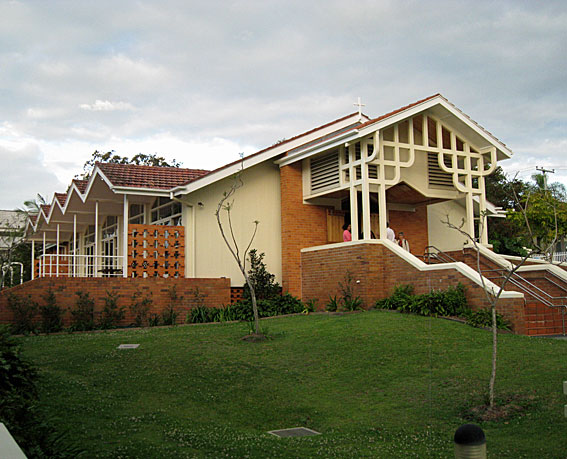
St Hilda's School Chapel
[Photograph by Geoffrey Cox (September 2014)]

St Hilda's School Chapel
[Photograph by Geoffrey Cox (September 2014)]
Historical and Technical Documentation by Geoffrey Cox
© OHTA 2012, 2014 (last updated October 2014)
St Hilda's School was founded in 1912, when the Diocese of Brisbane took over 'Goy-Te-Lea,' a small private school for young ladies that had been established initially in Ipswich in 1880 and moved to Southport in 1882.1 The present school chapel was opened and dedicated on 6 October 1962, having been designed by the architects Conrad & Gargett of Brisbane.2

The interior of St Hilda's School Chapel
[Photograph by David Vann (November 2012)]
At the time the chapel was designed, there was no consideration given by the architect to the inclusion of a pipe organ, and the design and location of the instrument in the 1980s presented some initial difficulties. The organ appears to have occupied at least two different positions in the chapel since being installed.
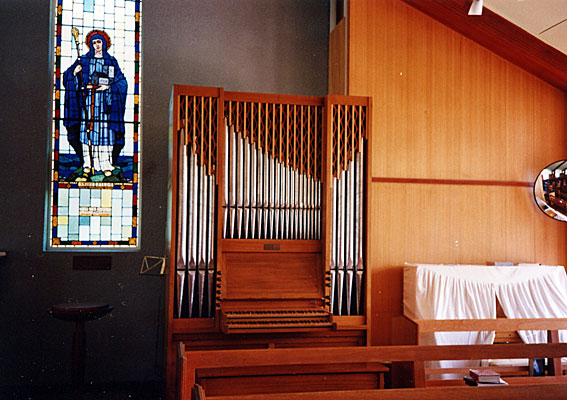
The original location of the organ in St Hilda's School Chapel
[Photograph by Howard Baker (1990s)]
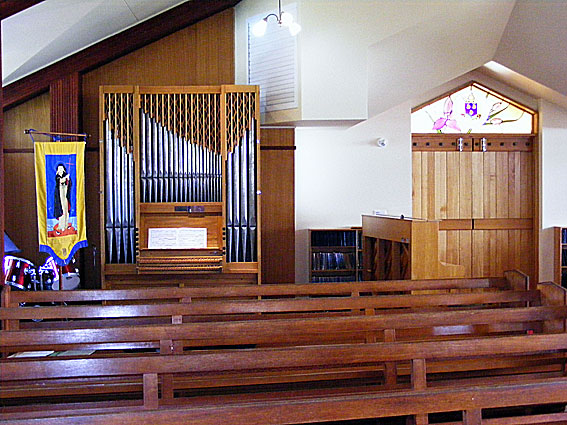
The present location of the organ in St Hilda's School Chapel
[Photograph by Richard Ham (2009)]
The organ was built in 1985 by J.W. Walker & Sons of Brandon, Suffolk, and installed in 1986 by David Hudd, who was then resident in Brisbane as the firm's local manager. The consultant for the organ project was Charles Clark. The shape of the building and the low ceiling dictated that the organ be placed against the back wall, and a suitable compromise was reached by spreading the seven stops of the standard one-manual Walker 'Positive Minor' over two manuals and pedals, with the Stopped Diapason 8ft duplexed on both manuals.3
The keys are standard for Walker instruments of this time, made from either boxwood or maplewood, while the sharps are of ebony or rosewood. The drawstop heads and shanks are of rosewood. The slider chests are fitted with laminated plastic slides, and the wind supply is controlled by Walker's specially designed Schwimmer Regulators.4
The instrument was dedicated by the Very Revd Arthur Grimshaw (Dean of St John's Cathedral, Brisbane) at a Service of Thanksgiving on 16 November 1986.5
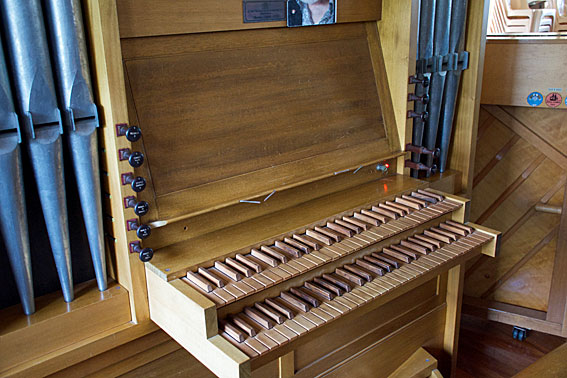
The console of the J.W. Walker & Sons organ
[Photograph by Rodney Ford (September 2014)]
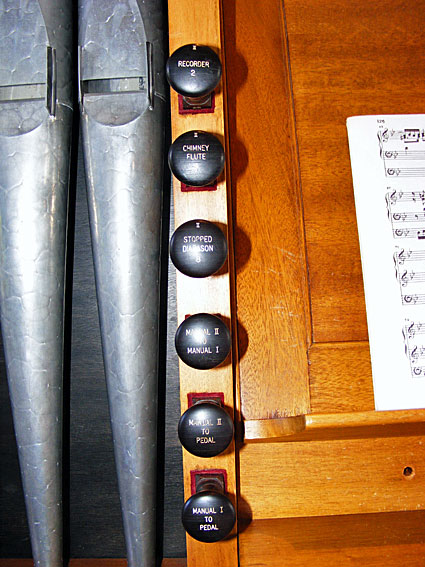
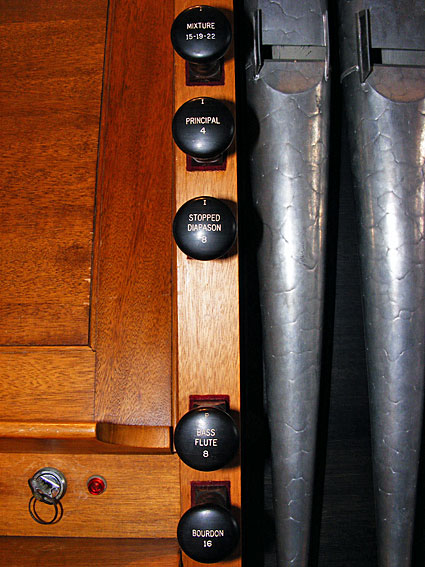
Stop Jambs of the J.W. Walker & Sons organ
[Photographs by Richard Ham (2009)]
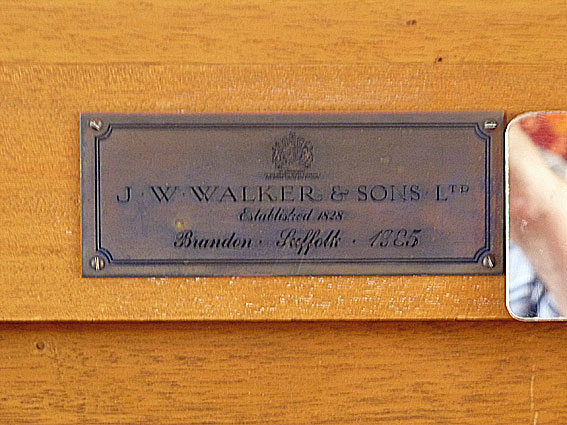
The organbuilder's nameplate
[Photograph by David Vann (November 2012)]
| MANUAL I Stopped Diapason Principal Mixture (15.19.22) MANUAL II Stopped Diapason Chimney Flute Recorder PEDAL Bourdon Bass Flute COUPLERS Manual II to Manual I Manual I to Pedal Manual II to Pedal |
8 4 III 8 4 2 16 8 |
A A B B |
Mechanical action
Attached console
Compass: 58/30
Pedalboard: radiating & concave.6
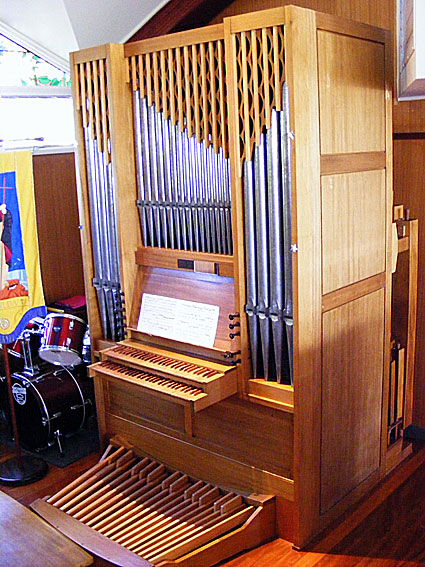
[Photograph by Richard Ham (2009)]
______________________________________________________________________
1 St Hilda's School - History. www.sthildas.qld.edu.au - accessed April 2012.
2 Personal communication to G. Cox from Mrs Catherine Mackintosh (school archivist), April 2012.
3 Charles Clark, 'The Pipe Organ in St. Hilda's School Chapel, Southport,' Organ Society of Queensland Newsletter, vol. 18, no. 3 (December 1990), pp. 6-10.
4 Draft contract from J.W. Walker & Sons (Australia) Pty Ltd (16 August 1984), supplied 2009 by Richard Ham.
5 Clark, op. cit.
6 Specification from Clark, op. cit., and noted by Richard Ham, 2009.